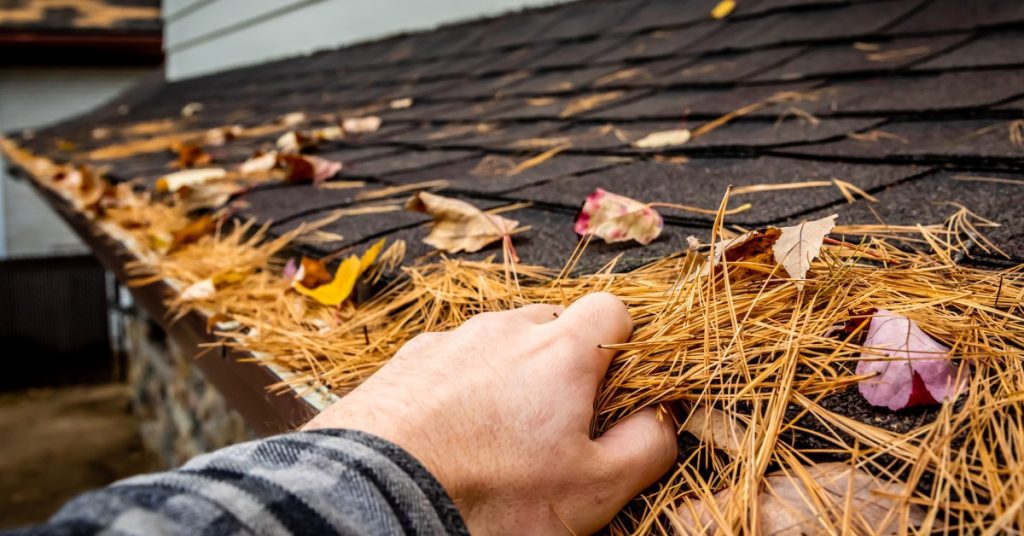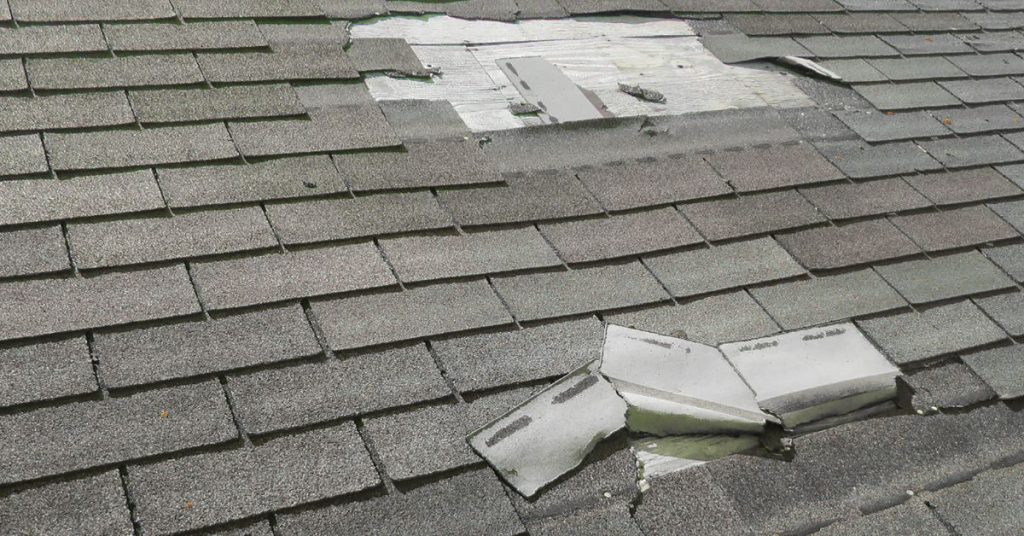A roof is one of the most critical components of a home, providing protection from the elements and helping to maintain the structural integrity of the building. As such, homeowners need to take care of their roofs to protect their investment in their property. With that in mind, we’ve compiled a list of the top 10 essential roofing tips for homeowners to keep their roofs in top condition. Whether you’re a new homeowner or have been in your house for years, these tips will help you identify potential issues early and take steps to address them before they become costly problems.
7 Essential Roofing Tips for Homeowners
Conduct Regular Roof Inspections
Your roof is the first line of defense against the elements, so keeping it in good condition is essential. Regular roof inspections are one of the best ways to catch potential issues early and prevent costly damage to your home.
Generally, homeowners should inspect their roofs at least twice a year – once in the spring and again in the fall. Check your roof after severe weather, such as a heavy storm or hail, is also a good idea. During the inspection, take note of any signs of damage, such as missing or damaged shingles, cracked caulking, or rusted flashing.
It’s also important to check for signs of wear and tear. For example, asphalt shingles may lose granules over time, making them less effective at protecting your home. Tile roofs can develop cracks, allowing water to seep into your home. By catching these issues early, you can address them before they become significant problems.
If you need more time to conduct a roof inspection yourself, consider hiring a professional roofing contractor to perform the inspection for you. A trained professional can identify potential issues that might be easy to miss otherwise and provide advice on maintaining your roof correctly.
Overall, regular roof inspections are crucial to maintaining your home’s structural integrity and protecting your investment. By inspecting your roof regularly, you can catch potential issues early and take steps to address them before they become costly problems.
Keep Gutters Clean and Clear
Your gutters are essential in keeping water away from your home’s foundation and preventing damage to your roof. However, if they become clogged, they can quickly become more of a liability than an asset. Here are some tips for keeping your gutters clean and clear:

Clean your gutters regularly: At a minimum, you should clean your gutters twice a year – once in the spring and again in the fall. However, if you have a lot of trees around your home, you may need to clean them more frequently.
Use a gutter scoop: A gutter scoop can be a valuable tool for removing leaves, twigs, and other debris from your gutters. Scoop the debris out of the gutter and dispose of it in a trash bag or compost bin.
Use a pressure washer: If your gutters are particularly dirty, you may want to consider using a pressure washer to clean them. However, be careful not to use too much pressure, as this can damage your gutters.
Check for leaks: While you’re cleaning your gutters, take the time to inspect them for any leaks or other damage. If you find any, make sure to address them promptly to prevent water damage to your home.
By keeping your gutters clean and clear, you can help ensure they continue doing their job properly and protect your home from water damage. It’s a small task that can make a big difference in the long run.
Trim Overhanging Trees
Trees can add beauty and shade to your home, but they can also cause damage to your roof if their branches overhang. Here are some tips for trimming overhanging trees:
Identify which trees need trimming: Look for trees whose branches are close to or touching your roof. These branches can scratch and damage your roof and provide a pathway for rodents and other pests to enter your home.
Hire a professional: If you’re uncomfortable trimming trees, consider hiring a professional arborist to do the job for you. They have the tools and expertise to trim the trees safely and effectively.
Trim back branches: Once you’ve identified which trees need trimming, use a pruning saw or shears to trim back the branches that are overhanging your roof. Make sure to cut the branches at the base and not just in the middle, as this can cause the branch to fall and damage your roof.
Be mindful of the time of year: It’s generally best to trim trees in the fall or winter, when they’re dormant. This can help prevent damage to the tree and ensure that it continues to thrive.
By trimming overhanging trees, you can help prevent damage to your roof and keep pests out of your home. It’s a simple task that can make a big difference in the long run.
Replace Missing or Damaged Shingles
Your shingles are the first line of defense against the elements; if they’re missing or damaged, they can’t do their job properly. Here are some tips for replacing missing or damaged shingles:

- Identify which shingles need replacing: Look for missing, cracked, or curled shingles. These shingles are no longer effective at protecting your roof and should be replaced as soon as possible.
- Purchase replacement shingles: Contact a roofing supplier to purchase replacement shingles that match the color and style of your existing shingles.
- Remove the old shingle: Use a pry bar to remove the damaged shingle carefully. Be careful not to damage the surrounding shingles or the roof decking.
- Install the new shingle: Slide the new shingle into place and secure it with roofing nails. Make sure to place the nails in the designated areas to ensure a secure fit.
- Seal the shingle: Apply roofing cement to the edges of the new shingle to create a watertight seal and prevent leaks.
By replacing missing or damaged shingles, you can help ensure that your roof continues to protect your home from the elements. It’s a simple task that can prevent costly damage in the long run.
Ventilate Your Attic
Proper attic ventilation is essential for maintaining the health of your roof and preventing damage from moisture buildup. Here are some tips for ventilating your attic:
- Install vents: Roof vents allow air to circulate through your attic, which can help prevent moisture buildup and heat from accumulating in your attic. There are several types of vents, including ridge vents, soffit vents, and gable vents.
- Check for blockages: Make sure that your vents are not blocked by insulation or debris, as this can prevent air from flowing through your attic.
- Consider a fan: If your attic is not getting enough air circulation, consider installing an attic fan. These fans can help move air through your attic and keep it cool.
- Inspect your insulation: Make sure that your attic insulation is not blocking your vents, as this can prevent air from flowing through your attic.
By ventilating your attic properly, you can help prevent moisture buildup, reduce the risk of mold and mildew growth, and prolong the life of your roof. It’s an important task that should be noticed.
Insulate Your Attic
Proper attic insulation can help improve your home’s energy efficiency and prevent damage to your roof caused by moisture buildup. Here are some tips for insulating your attic:
- Determine the recommended insulation level: The recommended insulation level for attics varies based on your climate zone. You can find this information on the Department of Energy’s website.
- Choose the right type of insulation: There are several types of insulation available, including fiberglass, cellulose, and spray foam. Each type has its pros and cons, so choosing the right type for your home is important.
- Seal air leaks: Air leaks in your attic can reduce the effectiveness of your insulation. Seal gaps around pipes, ducts, and electrical wires with caulk or foam to prevent air leaks.
- Hire a professional: If you need to be more comfortable insulating your attic, consider hiring a professional to do the job. They have the tools and expertise to insulate your attic properly.
By insulating your attic properly, you can help improve your home’s energy efficiency, reduce your energy bills, and prevent damage to your roof caused by moisture buildup. It’s an important task that can make a big difference in the long run.
Hire a Professional for Roof Repairs
While homeowners themselves can do some roofing repairs, it’s important to know when to call in a professional. Here are some situations where it’s best to hire a professional for roof repairs:
- Structural damage: If your roof has suffered structural damage, such as a collapsed section or a damaged support beam, it’s important to call in a professional. They have the expertise to repair the damage and prevent further issues safely.
- Extensive damage: If your roof has extensive damage, such as multiple missing or damaged shingles, it’s best to hire a professional. They can inspect your roof thoroughly and repair it to prevent further damage.
- Safety concerns: Roof repairs can be dangerous, especially if you’re uncomfortable working at heights. If you need to be more comfortable or experienced with roof repairs, hiring a professional with the necessary safety equipment and training is best.
- Warranty issues: If your roof is still under warranty, hiring a professional for repairs is important. Attempting repairs yourself could void your warranty and result in costly repairs down the road.
Hiring a professional for roof repairs ensures that the job is done safely and effectively. They have the expertise and equipment to make the necessary repairs and prevent further damage to your roof.
Final words
Taking care of your roof is an essential part of maintaining the health and longevity of your home. Following these top 7 essential roofing tips for homeowners can protect your investment and prevent costly repairs. Conduct regular roof inspections, keep gutters clean and clear, overhanging trim trees, replace missing or damaged shingles, ventilate your attic, insulate your attic, and hire a professional for roof repairs when necessary. By taking these steps, you can ensure that your roof remains in good condition for years. Remember, prevention is key in roofing maintenance, so don’t hesitate to take action when you notice a problem.

